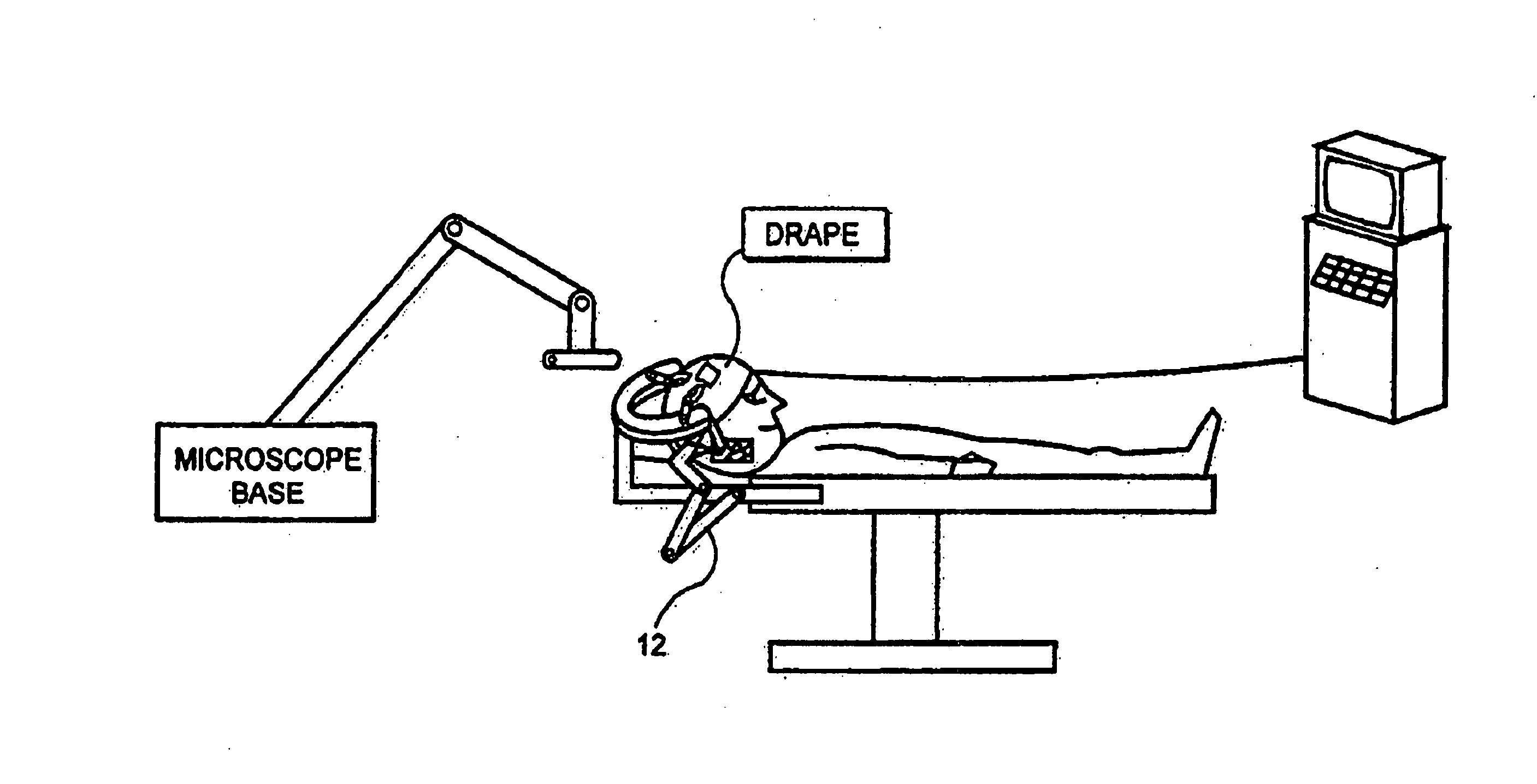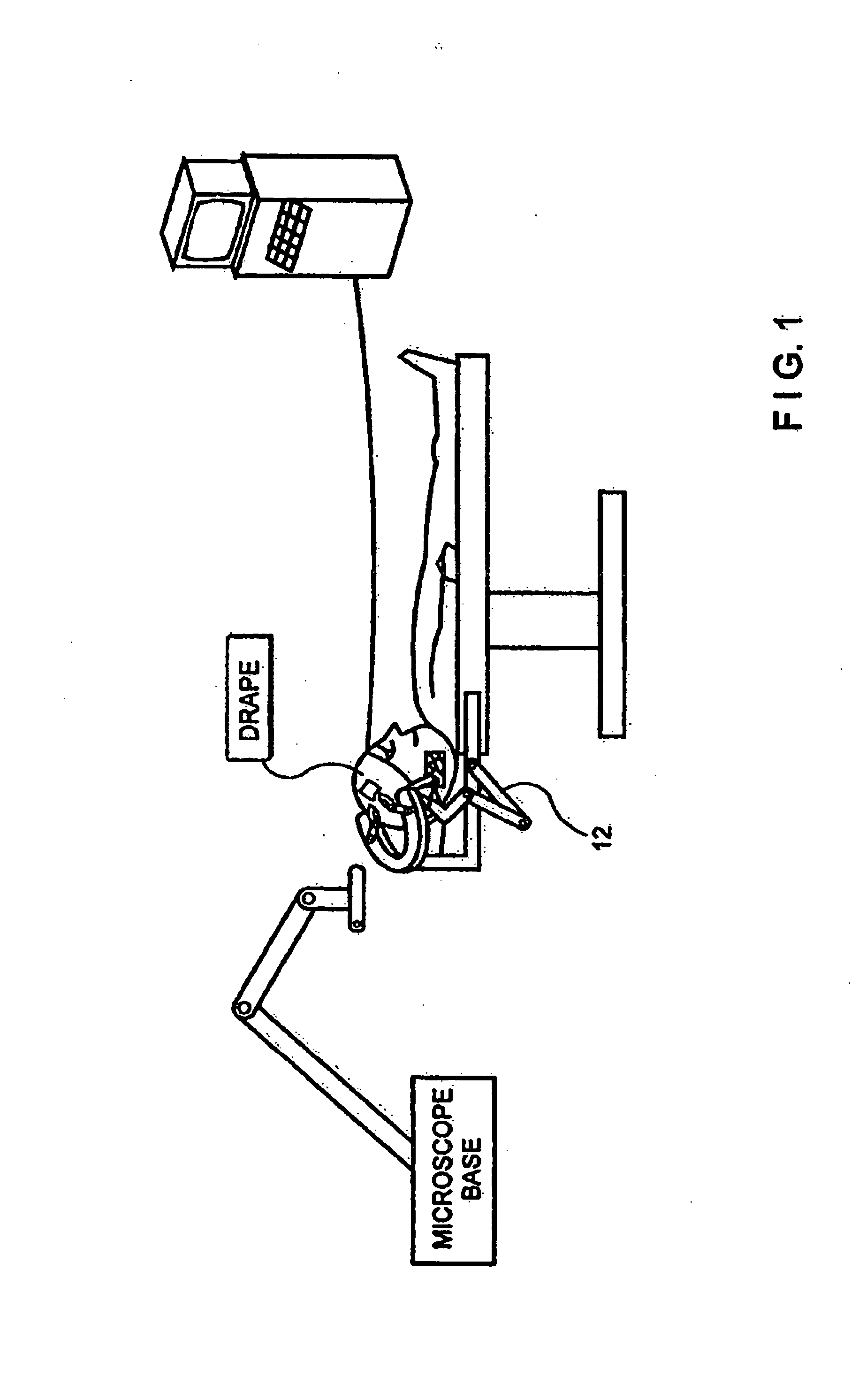Surgical robot and robotic controller
a robotic controller and robotic technology, applied in the field of robotic and computer assisted microsurgery, can solve the problems of affecting the actual surgery, slowing down the actual surgery, and tremor motion creating inaccuracy in surgery, so as to enhance the surgeon's humanly limited senses and accurate harmonization
- Summary
- Abstract
- Description
- Claims
- Application Information
AI Technical Summary
Benefits of technology
Problems solved by technology
Method used
Image
Examples
first embodiment
[0053] In light of the above, a first embodiment for a controller robot 10 is discussed below. FIGS. 1a and 1b show the parts of a controller robot 10 located about a head during surgery. A pinned head holder 12 may be attached via cranial screws 16 to a patient P. The pinned head holder 12 may provide a base for mounting a right robotic arm 14 and a left robotic arm 24 via robotic arm mounts 18. Robotic arm mounts 18 are shown as motorized and may provide for controlled motion including motion on the micron scale or smaller, and may be moveable and stabilized in radial tracks 20. The robotic arms may include sub-arms such as those shown in 14a, 14b, 24a, and 24b. Alternatively, the robot arm may be mounted on a portable tray system which would be fixed to the table which is turn fixed to the patient or other combination for fixation. Surgical instruments may be located at the end of the robotic arms as shown and may be interchangeable. An automated instrument changer such as a caro...
second embodiment
[0068] In a second embodiment, the controller robot 10 of the present invention may take the form shown in FIG. 6. The components of the controller robot may include a robotics portion 602, a surgeon workstation portion 604 (not illustrated in FIG. 6), a controller portion 606, and a mobile base 608. The controller portion 606 may be integrated with the robotics portion 602, the workstation portion 604, or the mobile portion 608. The robotics portion 602 may include left and right robotic arms 610, 612 (discussed further below) for carrying out commanded actions. The robotics portion 602 may be adapted to be engaged to an adapter 614 attached to a surgical table 616 (not illustrated in FIG. 6), such that the positioning of the robotics portion 602 relative to the surgical table 616 may be adapted for various types of procedures on varying portions of a patients anatomy simple by adjusting the position of the adapter 614.
[0069] The ability to locate the robotics portion 602 at variou...
PUM
 Login to View More
Login to View More Abstract
Description
Claims
Application Information
 Login to View More
Login to View More - R&D
- Intellectual Property
- Life Sciences
- Materials
- Tech Scout
- Unparalleled Data Quality
- Higher Quality Content
- 60% Fewer Hallucinations
Browse by: Latest US Patents, China's latest patents, Technical Efficacy Thesaurus, Application Domain, Technology Topic, Popular Technical Reports.
© 2025 PatSnap. All rights reserved.Legal|Privacy policy|Modern Slavery Act Transparency Statement|Sitemap|About US| Contact US: help@patsnap.com



